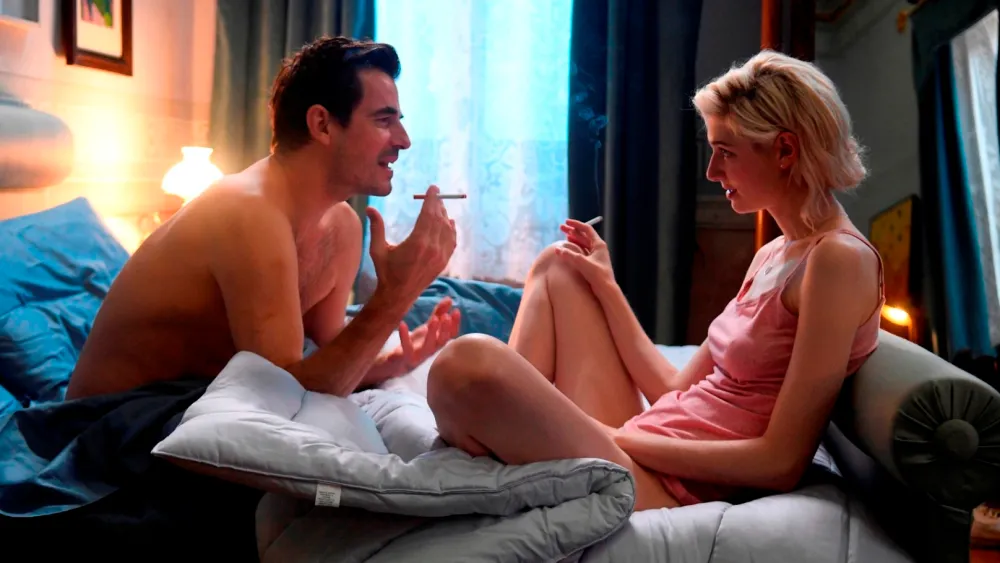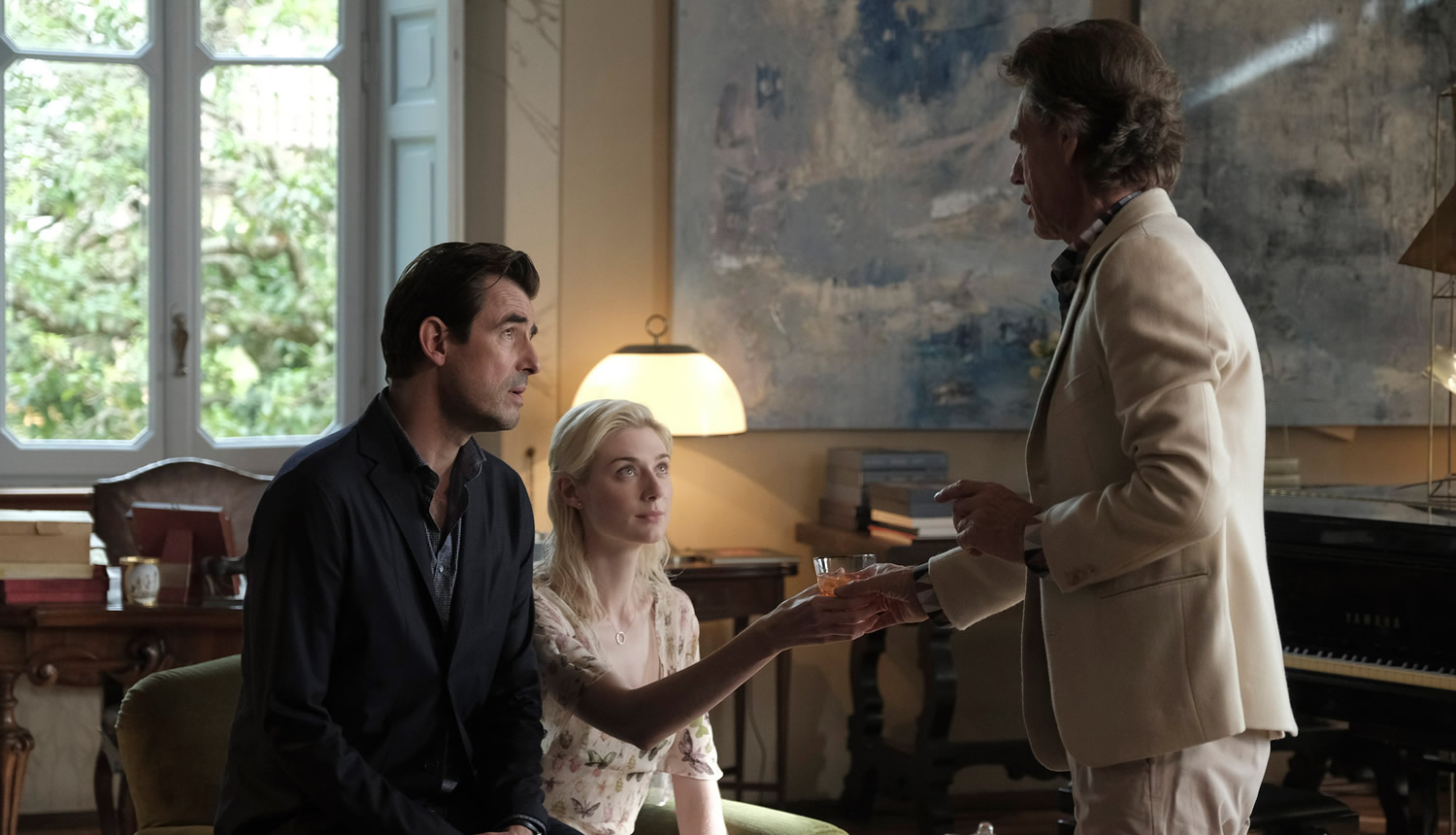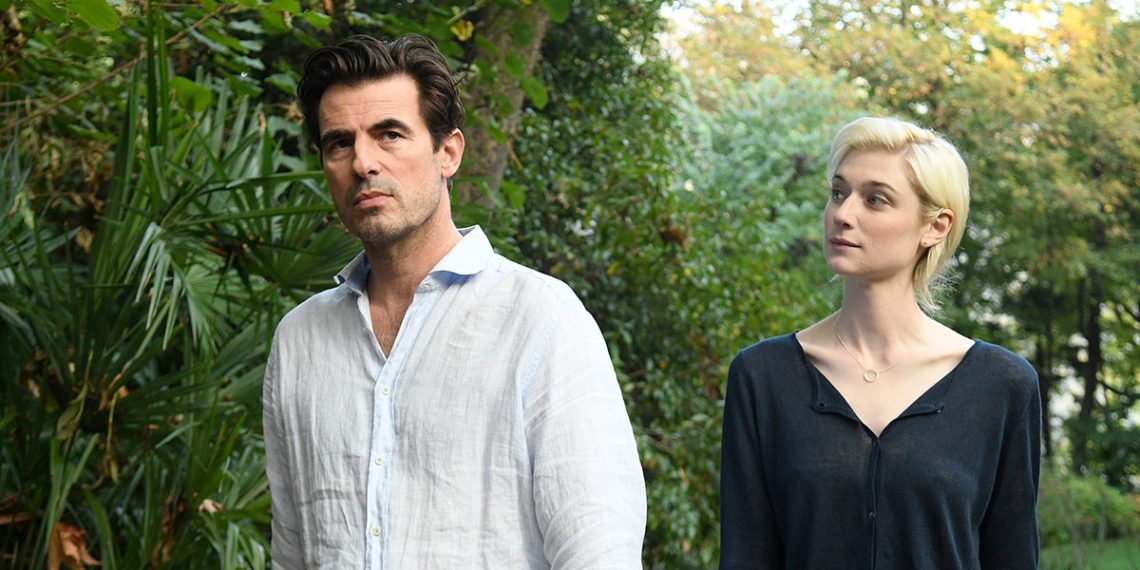The Burnt Orange Heresy is more than just a psychological thriller—it’s a deep look into the manipulative world of art, ambition, and deception. The film takes audiences on a journey where perception and reality blur, forcing its characters to navigate a dangerous game of power and illusion. At its core, the movie explores the idea that art is not just about creation but also about control—who owns it, who defines it, and who is willing to deceive to shape its legacy.
From the outset, the story introduces James Figueras, an art critic desperate to solidify his reputation. His encounter with a wealthy collector, Joseph Cassidy, sets him on a path toward Jerome Debney, a reclusive painter whose work has become the stuff of legend. Alongside his enigmatic companion, Berenice Hollis, James is drawn into a world where ambition knows no bounds, and the price of success may be more than he bargained for.
As the layers of deception unravel, the film masterfully plays with themes of truth and illusion, leading to a climactic revelation that upends everything James thought he understood. In a world where value is dictated by perception, the film asks a haunting question: If art is a lie we choose to believe, what happens when that lie is exposed?
The Setup: A Story of Art, Desire, and Deception
At its core, “The Burnt Orange Heresy” revolves around James Figueras (played by Claes Bang), an ambitious art critic who sees his chance for professional advancement when he’s hired by wealthy art collector Joseph Cassidy (Mick Jagger) to review the work of reclusive artist Jerome Debney (Donald Sutherland). As James and his companion, Berenice Hollis (Elizabeth Debicki), delve deeper into the world of high-end art, they become more entwined in a world where greed, power, and deception are as essential as the art itself.

The film initially sets up James as a man eager to climb the ranks of the art world. His journey seems straightforward at first: get close to Debney, understand his work, and write the ultimate review that will secure James’ place at the top. However, things are not as simple as they appear. As the story unfolds, we realize that both James and Berenice have dark secrets, and the allure of Debney’s paintings may be more dangerous than they thought.
The Key Characters and Their Motivations
Understanding the motivations of the film’s key characters is crucial to unraveling the ending.
James Figueras: James is portrayed as a man with ambition and a willingness to manipulate others to achieve his goals. His obsession with status and recognition drives much of his actions. His desire to prove himself as a great critic leads him to make increasingly questionable choices.
Berenice Hollis: Initially seen as a companion, Berenice’s true motivations are revealed as the film progresses. While she seems to be along for the ride, she too has her own ambitions and, as we see later, may have hidden motives for her relationship with James.
Joseph Cassidy: A mysterious and wealthy collector, Cassidy is the catalyst that sets James on the path to discovering Debney’s work. But he has a deeper connection to the artist than what is initially presented. Cassidy’s role in the story goes far beyond just being a wealthy benefactor.
Jerome Debney: The elusive artist whose work lies at the center of the plot, Debney is a figure of fascination. His works are as enigmatic as his character, and understanding his past and true intentions is key to understanding the film’s twist.
The Turning Point: The Unveiling of Debney’s Art

As James and Berenice gain access to Debney’s secluded home, they learn that the artist is not as reclusive as they once thought. Rather than simply being a figure to admire from a distance, Debney is an active participant in the narrative, manipulating the people around him. His paintings hold more than just aesthetic value; they represent a larger commentary on deception, identity, and the human condition.
James’s desire to write the ultimate review of Debney’s work leads him to act rashly, even resorting to blackmail in an attempt to unlock the secrets of the artist’s past. But this move sets off a chain of events that spiral out of control.
The Climax: The Consequences of Deception
The film’s climax takes place when James finally gains access to Debney’s most coveted work: a painting that has been hidden away for years. This revelation is the culmination of everything James has worked toward, but as with many things in life, the truth is far more complicated than he expects.
In a stunning twist, we learn that the artist has been hiding a dark secret related to the painting—one that ties back to his past and the power dynamics between the characters. The truth about the painting reveals the true nature of the relationships between James, Berenice, and the other characters, showing that everyone involved has been lying to each other in some form.
The final scenes depict James’s realization that his obsession with achieving success has led him down a dangerous and ultimately empty path. His attempts to control the narrative, to own the story of Debney’s art, ultimately come back to haunt him.

The Ending: What Does It All Mean?
The ending of “The Burnt Orange Heresy” can be seen as a commentary on the elusive and often deceptive nature of art itself. Just as James believes he has uncovered the truth, he is confronted with a reality that is far murkier and more complex than he ever anticipated. The final moments of the film underscore the idea that no matter how much we try to control or understand art, its meaning is ultimately subjective and beyond our full grasp.
James’s Fate: At the end of the film, James finds himself in a position of powerlessness. His ambition, manipulation, and desire for recognition have ultimately led him to a dead end. Despite his best efforts, he is left empty-handed, a victim of his own schemes. This conclusion reflects the idea that those who seek to control or exploit art for personal gain will always find themselves on the losing side.
Berenice’s Role: Berenice, who initially seems like a passive participant, reveals that she too has her own agenda. Her actions throughout the film suggest that she may have been manipulating James all along. This raises questions about trust and the extent to which people are willing to deceive others to get what they want.
The Artist’s Power: Jerome Debney remains a figure of mystery, even at the end. His ability to remain detached from the events that unfold around him suggests that he may have always understood the nature of deception and manipulation, using art as a means to control the people around him.
The film’s conclusion serves as a stark reminder that chasing greatness at any cost often leads to an empty victory. James, once consumed by his desire for recognition, finds himself trapped in the very deception he tried to control. Meanwhile, Berenice’s true intentions remain as ambiguous as the art they pursued. And as for Jerome Debney, his mastery over the narrative proves that sometimes, the greatest artists are not just painters but master manipulators. Interestingly, the film’s title itself is a reference to a fictitious painting, reinforcing the idea that even the audience has been part of an elaborate deception all along.
[Updated: 03/30/2025]





